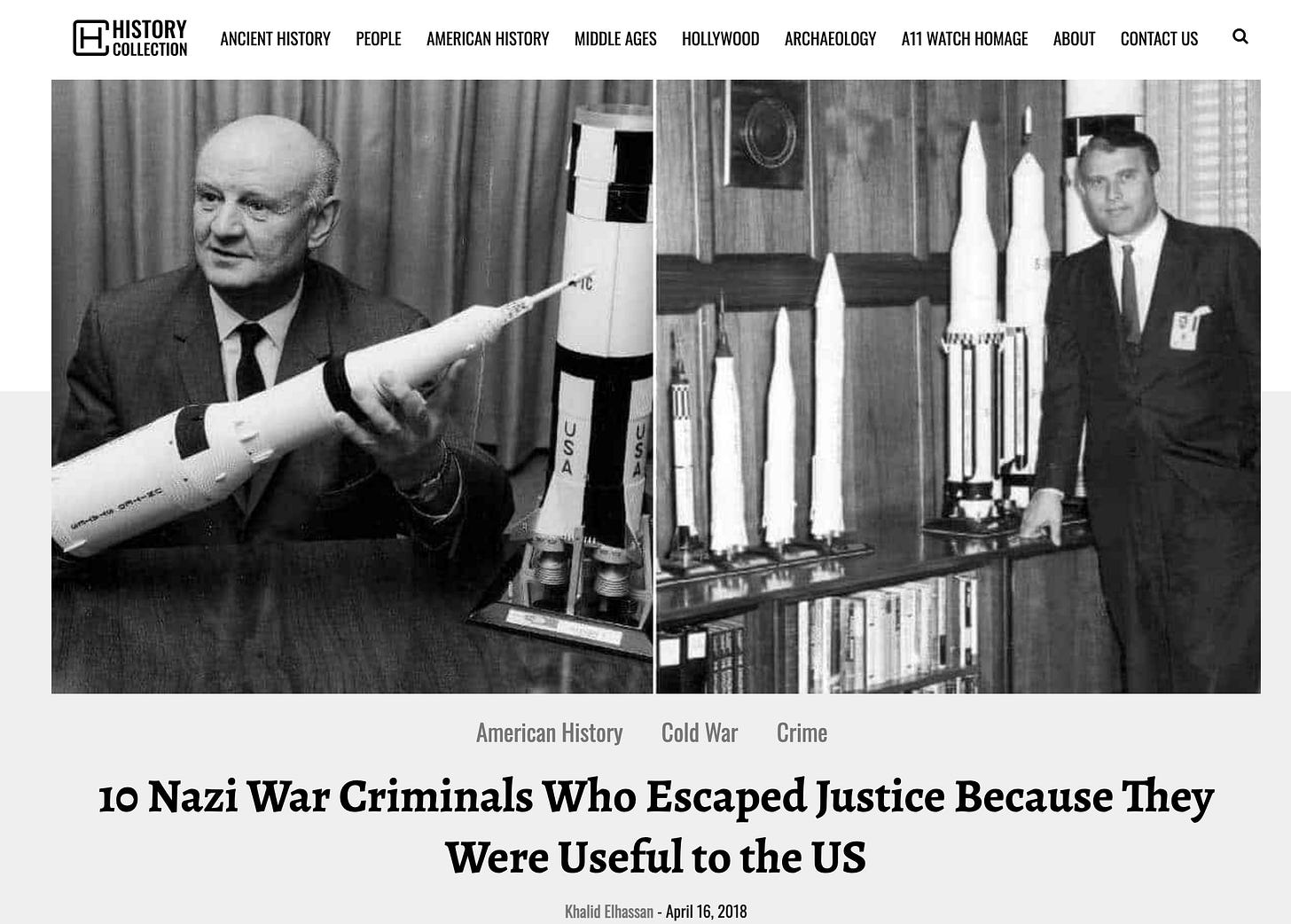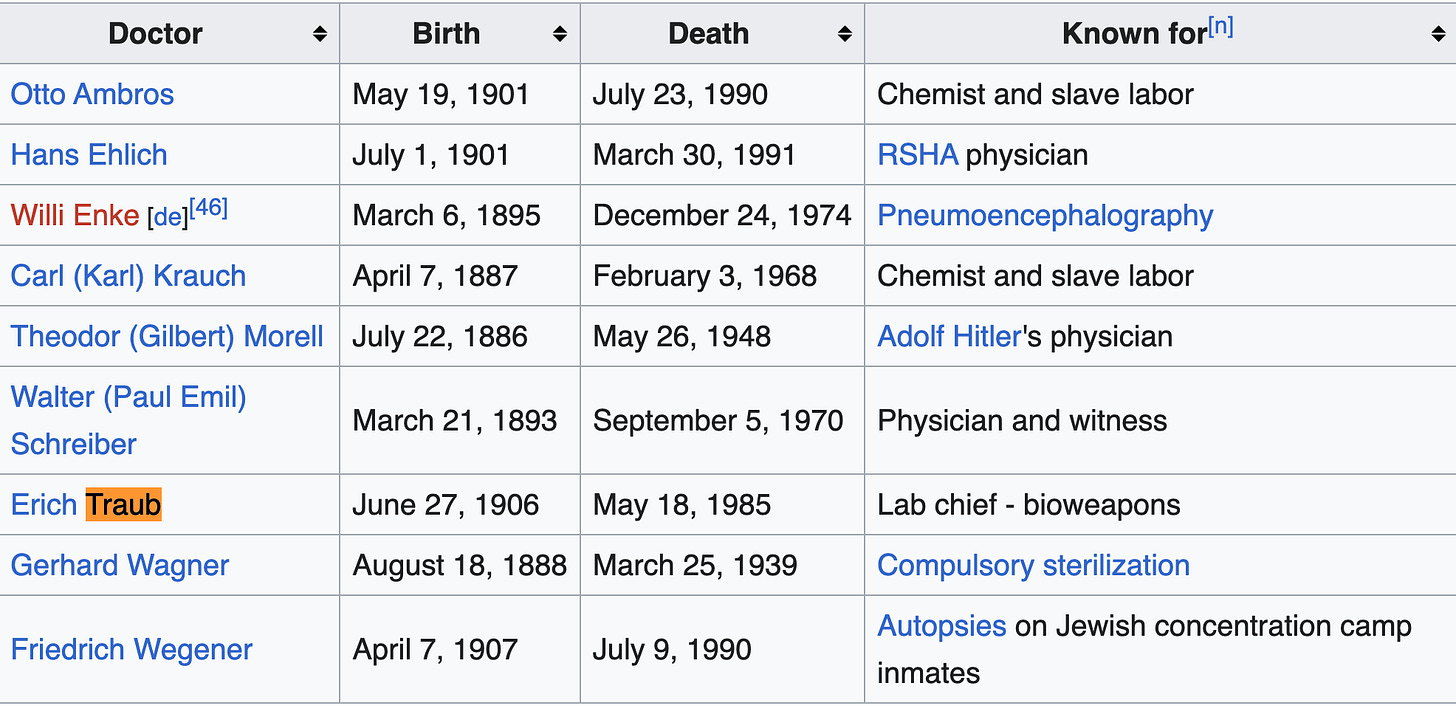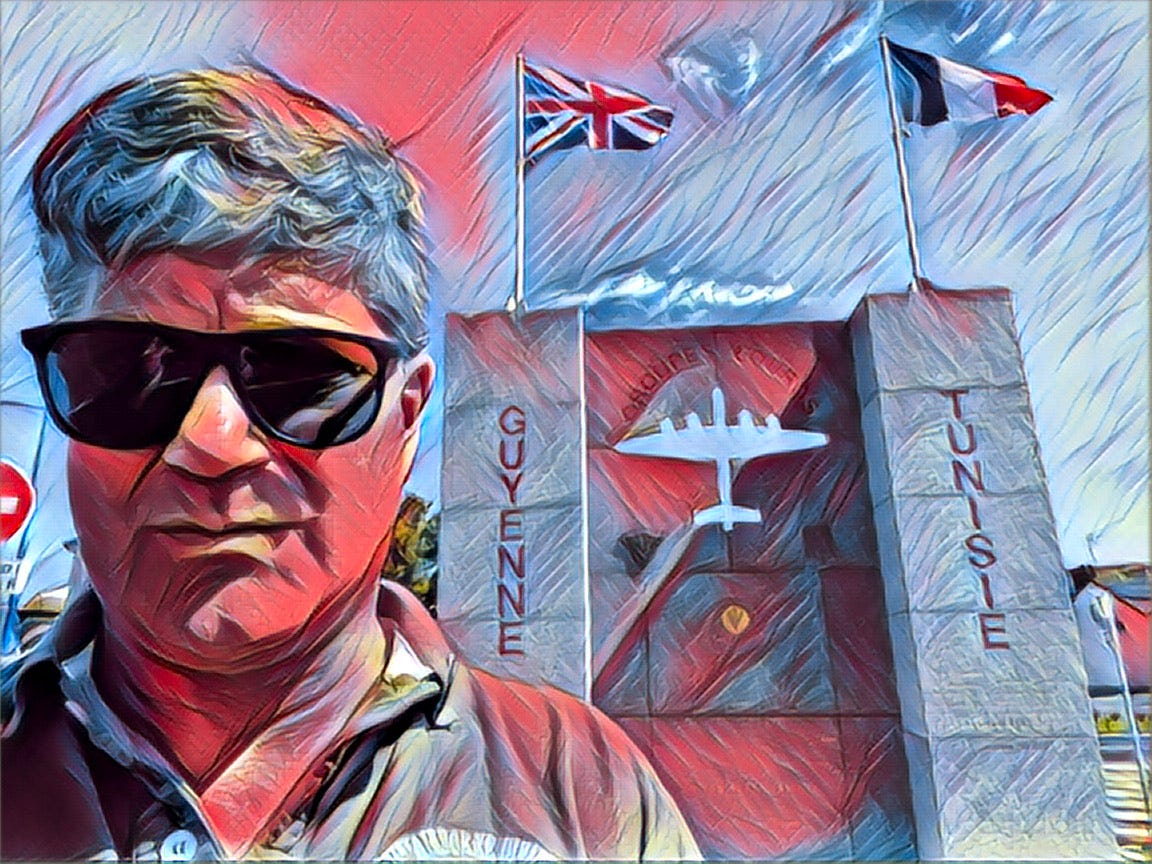Nazi Catcher In The Rye - Introduction - Blood, Sand, and Betrayal, The PermIndex Ruse, Nazi Paperclip Scientists, And More
Eisenhower Went From Being The D-Day Commander To A Conspiracy Theorist In Fifteen Years With His "Military Industrial Complex" Farewell Speech
JD Salinger had a short, ill-fated marriage with a beautiful German gentile doctor named Sylvia at the exact time he was determining the fate of many doctors at the Nazi doctor trials in Nuremburg, Germany.
We believe Salinger, working for the US Army CounterIntelligence Corp (CIC), softened his judgements of the Nazi doctors during this crucial period, not only commuting their death sentence, but also allowing some to come to the United States like Eric Traub.
https://ccsalinger.wordpress.com/wp-content/uploads/2015/06/sw.jpg
Many of the Nazi doctors at Nuremburg were marked for execution.
https://ccsalinger.wordpress.com/wp-content/uploads/2015/06/sw.jpg
Yet somehow, Salinger’s group conducted the interviews of these doctors, and the Nazi doctors won their reprieve. Otto Ambrose and Walter Schreiber were responsible for the development of bioweapons and used Jews for experiments, and later went on to successful careers at IG Farben. Eric Traub came to the United States under CIA patronage and created bioagents like Lyme Disease at Plum Island Lab 257.
https://en.wikipedia.org/wiki/List_of_Nazi_doctors
We attribute that to Salinger torrid romance with a German doctor during these crucial Nazi doctor interviews to spare them from execution. Salinger wrote Catcher in the Rye when his eight-month romance with Sylvia Welter had soured, after Salinger had recommended the reprieves.
https://www.pbs.org/wnet/americanmasters/jd-salinger-film-excerpt-salingers-army-intelligence-work-in-world-war-ii/2825/
Catcher in the Rye strikes out at the phoniness of society, and perhaps he was still stinging from his romance being used to secure Nazi doctor commutations. We believe his true title for his book should have been “Nazi Catcher In The Rye” because he regretted failing in his Jewish heritage to bring the “Nazi Doctors” to justice.
https://en.wikipedia.org/wiki/Otto_Ambros
Our research group picks up where JD Salinger’s pangs of guilt leave off. Many of our researchers are related to Nuremberg’s researchers and attorneys. We chase down the Nazi PaperClip programs that came to the US from the Nazi PaperClip program. We have several series on Nazi PaperClip programs, including CIA’s Deepest Secrets, The PermIndex Ruse, and many others, including “Blood, Sand, And Betrayal,” where we follow Neo-Nazi groups to Ukraine.
https://georgewebb.substack.com/s/cia-deepest-secrets-bioagents-nazis
Here is Blood, Sand, And Betrayal. Enjoy.
In the Summer of 2020, author George Webb visited every one of the five Normandy invasion beaches and most of the French towns involved in the breakout from the beachheads. In this series, George Webb explores why we are now funding the very same Nazi elements in Ukraine we fought in World War II.
Detailed summary
The article argues that while serving with the U.S. Army Counter-Intelligence Corps (CIC) during the post-war “Nazi doctor” trials at Nuremberg, novelist J.D. Salinger became romantically involved with a young German physician, Sylvia Welter.
The author contends that the affair helped soften Salinger’s recommendations on the fates of several doctors accused of human-experimentation war crimes, resulting in commuted death sentences and, for a few, eventual passage to the United States under Operation Paperclip.
Particular attention is given to bioweapons specialists Otto Ambros, Walter Schreiber, and Eric Traub, whose subsequent careers at IG Farben or U.S. facilities—such as Plum Island’s Lab 257—are presented as cautionary examples of Nazi expertise being recycled in American programs.
The narrative then leaps forward, framing modern U.S. national-security policy as a direct descendant of those post-war compromises. It claims President Eisenhower and President Kennedy both tried to warn the public about a militarized “Fourth Reich” being built inside the American military-industrial complex, only to have their concerns dismissed as “conspiracy theory”—a term the article says was popularized by the Dulles brothers to shield CIA planning.
Journalist George Webb’s reporting is presented as the contemporary continuation of that warning, tracing Paperclip’s lineage through today’s conflicts in Ukraine and the COVID-era rise of bio-warfare infrastructure.
Finally, the article connects Klaus Schwab, the World Economic Forum, and Ukrainian tycoon Igor Kolomoisky to large U.S. aid packages for Kyiv and to battalions such as Azov. It concludes that American taxpayers now fund openly Neo-Nazi formations and privately controlled bio-warfare capabilities, rendering the label “conspiracy theory” obsolete: what was once speculation has hatched, like an egg, into visible policy.
People
J.D. Salinger
Jerome David Salinger was a Jewish-American writer best known for The Catcher in the Rye (1951). During World War II he served in U.S. Army intelligence units, interrogating prisoners and, according to the article, screening Nazi physicians for potential prosecution or recruitment. The piece alleges he used that authority leniently because of a brief post-war marriage to German doctor Sylvia Welter. It further suggests Salinger’s later literary obsession with “phonies” masks a private guilt over sparing war criminals.
Sylvia Welter
Dr. Sylvia Welter was a young German gentile physician whom Salinger met in occupied Germany in 1945–46. Their marriage lasted only eight months, ending when U.S. authorities denied her long-term entry to America. The article portrays her as a possible emotional leverage point used by detained Nazi doctors to obtain mercy from Salinger’s CIC team. Little else is documented about her post-annulment life.
Otto Ambros
Ambros was a chemist who rose to board-level status at IG Farben and managed Buna synthetic-rubber plants that exploited Auschwitz slave labor. Convicted of slavery and mass-murder charges at the 1948 Nuremberg “I.G. Farben Trial,” he nonetheless received a comparatively light sentence and was released in 1952. He soon resumed consulting for German and U.S. chemical firms, notably advising Dow on Agent Orange precursors. The article holds him up as Exhibit A for Paperclip-style leniency toward weapon-oriented scientists.
Walter Schreiber
Major General Dr. Walter Schreiber served as Surgeon General of the Wehrmacht and took part in wartime typhus, plague, and bioweapon programs. Despite testimony against him, he was never convicted at the Doctors’ Trial; the Soviets later revealed his vaccine experiments on inmates. In 1951 he emigrated to the United States under Army auspices, working briefly at the Air Force School of Aviation Medicine in Texas. Public exposure forced his relocation to Argentina, illustrating both U.S. recruitment and eventual embarrassment.
Eric Traub
Traub was the Third Reich’s premier veterinary virologist, directing Insel Riems research into foot-and-mouth and other zoonotic agents. Recruited through Project Paperclip, he advised U.S. biowarfare labs and repeatedly visited Plum Island, which later gained notoriety for Lyme-disease origin theories. The article casts him as chief architect of American agro-biological warfare capabilities. His career epitomizes how Nazi expertise slipped into Cold-War programs with minimal public scrutiny.
Dwight D. Eisenhower
Eisenhower commanded Allied forces in Europe and later served two terms as U.S. President (1953-61). In his 1961 farewell address he warned of a “military-industrial complex,” a phrase cited here as prophetic of Paperclip’s consolidation. The article claims intelligence elites ridiculed him as a conspiracy theorist when he objected to clandestine interventions such as the 1954 Guatemala coup. His warnings are presented as vindicated by later document releases.
John F. Kennedy
Kennedy, the 35th U.S. President, famously clashed with CIA planners over the 1961 Bay of Pigs invasion and contemplated curbing covert operations. The article suggests he, like Eisenhower, doubted the Dulles-run security apparatus and therefore became an early target of “conspiracy theorist” smears. His assassination is implied to have silenced further challenges to Paperclip legacies. The piece thus frames Kennedy as another leader who recognized—and paid for opposing—embedded Nazi networks.
Allen Dulles
Allen Welsh Dulles directed the Central Intelligence Agency from 1953 to 1961, overseeing major covert actions worldwide. During the war he led OSS operations in Switzerland and reportedly made early contacts with fleeing Nazi officials. The article claims he helped coin the phrase “conspiracy theorist” to discredit critics of CIA activities. His role symbolizes the institutional shield that protected Paperclip recruits.
John Foster Dulles
Older brother to Allen, John Foster Dulles was U.S. Secretary of State under Eisenhower and a principal architect of Cold-War foreign policy. He advocated aggressive containment, including covert actions aligned with corporate interests. The article pairs him with Allen as twin guardians of an emerging military-industrial establishment. Together they allegedly normalized the practice of labeling dissenters “conspiracy theorists.”
Klaus Schwab
Schwab is founder and executive chairman of the World Economic Forum, famous for its annual Davos meetings. The article highlights his father’s ties to Third-Reich armaments production and alleges Klaus continued that lineage through nuclear-technology deals with apartheid South Africa. It portrays him as orchestrating huge U.S. aid flows to Ukraine that empower Neo-Nazi battalions. Schwab is cast as the modern face of transnational “Fourth Reich” ambitions.
Igor Kolomoisky
Kolomoisky is a Ukrainian-Israeli billionaire who built PrivatBank into the nation’s largest financial institution and funded volunteer military units, including the Azov Battalion. The article says U.S. and international aid routed through Ukrainian ministries ultimately enriches him. It links Kolomoisky to Schwab in a joint project to create a mercenary force and bio-warfare capability outside formal state control. His fortunes exemplify how post-Soviet oligarchs benefit from Western security agendas.
George Webb
George Webb is an independent investigative journalist and author of self-published series on intelligence, bio-warfare, and political corruption. He positions his work as a continuation of Nuremberg researchers’ unfinished business, exposing modern Paperclip descendants. In 2021 he published Schwab Me No More, accusing Klaus Schwab and Igor Kolomoisky of building a private, state-sponsored Neo-Nazi army. Webb’s field reporting and Substack essays supply the article’s modern connective tissue.
Organizations
U.S. Army Counter-Intelligence Corps (CIC)
The CIC was the Army’s wartime and early Cold-War agency for security vetting, espionage-countering, and prisoner interrogation. Its officers, including J.D. Salinger, screened former Nazis both for prosecution and for possible U.S. employment. Critics argue that CIC reports often determined whether scientists were hanged, jailed, or sent to America. The article treats CIC judgments as the hinge on which Nazi doctor fates—and later bio-warfare programs—turned.
Nuremberg “Nazi Doctor” Trials
Formally the Medical Case of the U.S. Nuremberg Military Tribunals (1946-47), these proceedings tried 23 physicians for lethal experiments on inmates. Twelve received death sentences, yet several others later entered Western scientific life after sentences were commuted or never imposed. The article alleges Salinger’s CIC interviews influenced lenient outcomes. The trials are framed as the moral crossroads where justice for Holocaust victims was traded for Cold-War advantage.
Operation Paperclip
Paperclip was the secret U.S. program to import German scientists, engineers, and physicians after World War II. It bypassed official de-Nazification rules, offering expertise in rockets, chemicals, and biology in exchange for citizenship and clean records. The article asserts that Paperclip’s bioweapon wing, fostered by Traub and Schreiber, seeded today’s military labs. It is depicted as the root system of a “Fourth Reich” within U.S. institutions.
Central Intelligence Agency (CIA)
Founded in 1947, the CIA absorbed OSS war assets and soon coordinated Paperclip clearances for select German specialists. Under Director Allen Dulles it expanded covert action globally, often partnering with corporate power. The article accuses the Agency of shielding Nazi veterans and inventing the “conspiracy theorist” epithet to silence skeptics. CIA patronage supposedly allowed figures like Eric Traub to flourish in American programs.
IG Farben
IG Farben was Nazi Germany’s chemical-industrial conglomerate, producing everything from synthetic rubber to Zyklon B gas. Post-war breakup did not prevent many executives, including Otto Ambros, from reintegrating into Western industry. The article uses Farben as an archetype of war-criminal corporations reborn under new names. Its legacy underscores the continuity between Nazi research and post-war economic power.
Plum Island (Lab 257)
Plum Island Animal Disease Center sits off Long Island, New York, studying foreign livestock pathogens. Conspiracy researchers allege Paperclip alumnus Eric Traub helped design its facilities, linking it to Lyme-disease emergence nearby. The article cites Plum Island as a real-world outlet for Nazi vet-virology know-how. It symbolizes bio-warfare’s quiet shift from Europe to U.S. soil.
U.S. Congress
Congress controls American war funding and foreign aid, yet the article argues it routinely bankrolls extremist forces abroad without oversight. Three Ukraine packages—$17 billion, $33 billion, and $40 billion—are showcased as pipelines to Kolomoisky’s PrivatBank and Azov battalions. Lawmakers’ Davos engagements with Klaus Schwab are portrayed as rubber-stamping transnational agendas. Thus Congress appears less a check than an enabler of modern Paperclip offshoots.
Azov Battalion
Azov began in 2014 as an ultra-nationalist Ukrainian militia and was later folded into the National Guard. Critics cite its neo-Nazi iconography and some members’ extremist views. The article claims U.S. aid helps arm Azov, illustrating overt support for ideologies once fought in World War II. Azov functions as today’s embodiment of the “sons of the Third Reich” Eisenhower feared.
World Economic Forum (WEF/Davos)
The WEF convenes political and corporate leaders each January in Davos, Switzerland, to discuss global governance issues. Founded by Klaus Schwab in 1971, it presents itself as a neutral platform for public-private cooperation. The article paints WEF as a networking hub where Western officials coordinate with oligarchs like Kolomoisky on security and bio-technology ventures. Davos thereby serves as a modern clearinghouse for policies rooted in Paperclip pragmatism.
PrivatBank
PrivatBank is Ukraine’s largest bank, nationalized in 2016 after a multi-billion-dollar shortfall allegedly engineered by co-owner Igor Kolomoisky. Despite legal battles, Kolomoisky retains influence over its successor structures. The article claims IMF, World Bank, and U.S. aid ultimately transit PrivatBank en route to paramilitary projects. It exemplifies how international finance mingles with private armies.
International Monetary Fund (IMF) & World Bank
Both Bretton Woods institutions extend loans and aid packages to member states, including war-torn Ukraine. The article argues their funds often disappear into oligarch-controlled channels, bypassing intended civilian uses. In this telling, IMF and World Bank support becomes indirect subsidy for Neo-Nazi or bio-warfare enterprises. Their technocratic reputations mask geopolitical favoritism.
U.S. Joint Chiefs of Staff (JCS)
The JCS coordinates U.S. military strategy and has publicly declared biotechnology a critical future battlefield. The article cites this stance to justify its warning that Washington is privatizing bio-warfare capacities via Schwab-Kolomoisky networks. By outsourcing cutting-edge threats, the JCS allegedly repeats the Paperclip precedent on a global scale. Their statements legitimize, rather than restrain, clandestine pathogen research.
Modern Presidential scholars will tell you Eisenhower was a clear-thinking mastermind when he launched the D-Day Invasion on June 6th, 1944. The same scholars will tell you he descended into conspiracy theory after two terms as President of the United States.
Introduction
Two Dulles brothers, one heading up the US State Department and the other quickly consolidation power at the CIA, would even coin the phrase “conspiracy theorist” a few years later with Ike’s memorable “military industrial complex “ and the Kennedy Assassination in mind.
Think about the unmitigated temerity of Eisenhower wanting to know about the Guatemalan Invasion before the Dulles “planners”. Kennedy would show a similar lack of respect for the Dulles “planners” at the Bay of Pigs.
Other conspiracy theorists, like Eisenhower and Kennedy, warned of Nazi scientists infiltrating the governments top military laboratories, creating a military industrial complex for a “Fourth Reich” and not for the benefit of the American people.
To start the Nazi Catcher In The Rye Series, click this link or paste in your browser.
https://georgewebb.substack.com/s/nazi-catcher
Or click here to read the first story.
Nazi Catcher In The Rye - Part One - Blood, Sand, and Betrayal In Normandy
JD Salinger had a short, ill-fated marriage with a beautiful German gentile doctor named Sylvia at the exact time he was determining the fate of many doctors at the Nazi doctor trials in Nuremburg, Germany.
















George,
Bless you for your courage and pattern recognition...
Eisenhower wanted to warn US citizens about the MICC.
Military
Industrial
CONgressional
Complex
CONgressional was omitted from his speech.
The missing, hush-hush link in the organized crime wave that is W,DC, is CONgress.
Glad-handing, back-stabbing, thieving self-servants
May 20, 2025
3:25pm
Kissinger was deeply involved in all of this. All the presidents knew. I would say all congress people knew.